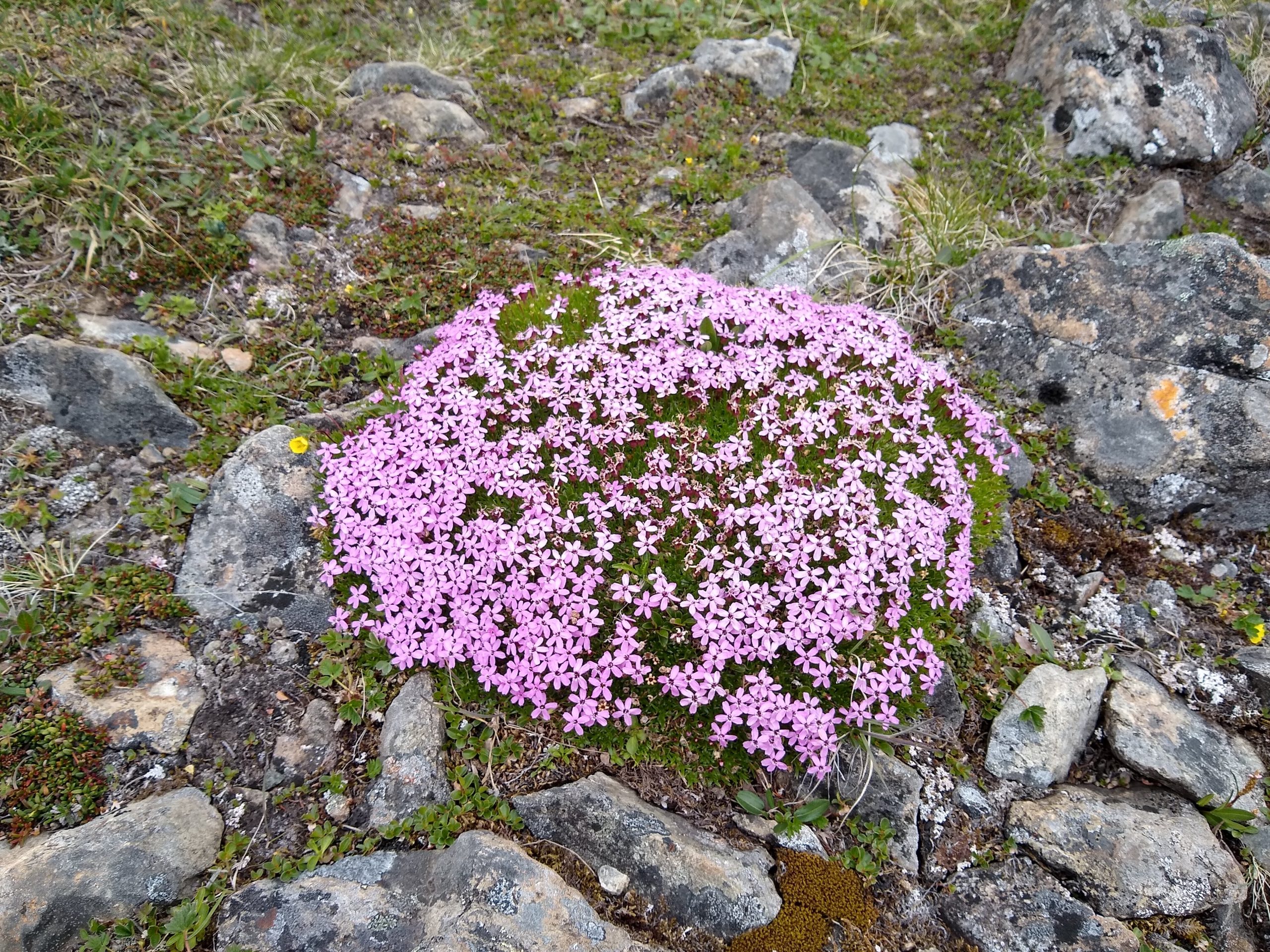Place-based Writing
Greg Hartley
“Bloom where you’re planted.”
I’ve heard that saying time and again for years. I’ve even tried to find the origin of it. Did some wise philosopher utter that advice? Or perhaps it has been written in a sacred text kept safe in a dry monastery for thousands of years? Who knows? But the advice always made sense to me. Modern equivalents abound with likewise commonsense. “Shop local,” signs appear on mom-and-pop businesses, encouraging us to steer clear of the big money of the big-box stores. Being a locavore—eating only foods grown within a certain distance of one’s residence—has become trendy.

But to really get the most out of the saying, “Bloom where you’re planted,” I had to climb a mountain. The Chugach range, east of the Anchorage Bowl, hosts a veritable garden of spring flowers clinging to what seemed like bare stone just days before. Here above the treeline, we find some of the most southerly permafrost in the state. Yet the flowers don’t hold back. They’re everywhere. But they’ve just shrunk. Hundred-year-old Arctic willows (salix arctica) hug the ground and barely peek above pebbles. Purple harebells (campanula lasiocarpa) sit in solitude on a four inch, thread-like stem. But the crowning glory goes to my favorite: Moss Campion (silene acaulis). These flowers colonize small boulders, covering the rock with a green dome of leaves one might mistake for moss, until spring when the dome gets completely crowned with a red lattice of tiny, perfect flowers.
These flowers bloom where they are planted. They make the most of their situation, improving the rocky landscape considerably. Maybe they don’t feed anyone the way blueberries do, or shade anyone the way birch trees do, but they inspire me nevertheless. They provide maximum impact for their minimal size. They stand out even though they are short.
Place-based writing does just this kind of work and is the theme that runs throughout this textbook. The focus on place allows a writer to take advantage of prior knowledge. You get to look around you and write what you know, because you are from a place, and chances are, you know it pretty well. New York educator Lauren Esposito says it simply: when it comes to writing, “place matters.”[1] To let the words start flowing, just pick a place you love, sit down, look around, and let go. My colleague Don Reardon offers a slightly different take: to write about the Land is to learn to love it.[2]
Place lets you not only take advantage of what you know but it also lets you take ownership of what you have. This text will favor Alaska as a place and as a topic, drawing wisdom from elders whose years on the land have granted them a stewardship that can be passed down to new generations through their words. You have that same power of place at your disposal. You, too, can make sense of where you are by examining where you’ve been. You can be that alpine azalea. Small perhaps, but exerting a positive, outsized influence on your environment.
- Esposito, Lauren. “Where to Begin? Using Place-Based Writing to Connect Students with Their Local Communities.” The English Journal, vol. 101, no. 4, 2012, pp. 70–76. JSTOR, http://www.jstor.org/stable/41415476. Accessed 16 Jan. 2024, 70. ↵
- Rearden, Don. “To Hear an Echo,” Echoes of Alaska, Anchorage: University of Alaska Anchorage, 2022. ↵

